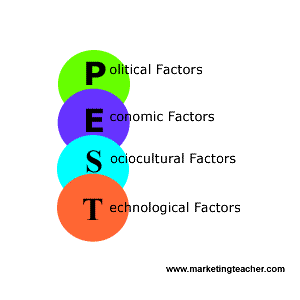Hello again dear followers,
today I am going to write a few words about marketing mix as an important strategic and marketing tool.
So, what is marketing, you may ask?
Marketing is the process of planning, and executing the conception, pricing, promotion and distribution of ideas, goods, and services to create and exchange value, and satisfy individual and organisational objectives.
Given the marketing objectives and goals, the target segments and the market position that has to be defended, the tools of the marketing plan have to be decided upon. The marketer has a number of tools to hand - the instruments of the marketing mix. Traditionally, these instruments are divided into four categories, called the 4Ps of the marketing mix. In table below some of the tools of the marketing mix are shown.
The product tool consists of three layers. The core product is the unique benefit that is being marketed. In fact, it is the position, the unique place in the mind of the consumer, that will be focused upon. Often the brand is a summary, a visualisation of this core benefit and all the associations it leads to. The core product has to be translated into tangible product. Product features, a certain level of quality, the available options, design and packaging are important instruments by which a core benefit can be made tangiable. Finally, the augmented product gives the tangible product more value and more customer appeal. The augmented product can be defined as the 'service layer' on top of the tangible product. It includes elements such as prompt delivery, installation service, after-sales service and management of complains.
Price is the only marketing instrument that does not cost anything, but provides the resources to spend on production and marketing activities. The list price is the 'official' price of a product. However, discounts and incentives of all kind can be used to make the product more attractive. Systems of down payments and payment periods, combined with attractive intrest rates, can also be used to make the offering more attractive and ensure that the immediate budget constraint is less of a problem for the consumer. The price instrument is an ambiguous tool. On the one hand, price cuts are en effective way to attract costumers. On the other, price cuts mean loosing margin and profit. Futhermore, the customer gets used to discounts and may gradually be educated to buy on price and be a brand-switcher. The regular use of price instrument is incompatible with building a strong possition and a strong brand on the basis of product benefits. Therefore, good marketing can be defined as avoiding the price tool as much as possible.
By means of place and distribution, the company manages to process of bringing the product from the production site to the customer. This involves transporting the product , keeping an inventory, selecting wholesaleres and retailers, deciding on which types of outlet the product will be distributed in, and the assortment of products to be offered in the various outlets. Distribution strategy also implies maintaing co-operatin between the company and the distribution channel, and finding new ways to distribute products, such as infomercials and e-commerce.
Promotion and marketing communications (MC) are the fourth and most visible instruments of the marketing mix. They involve all instruments by means of which the company communicates with its target groups and stakeholders to promote its products or the company as a whole.
Good marketing is an integrated marketing. Marketing instruments have to bee combined in such a way that the company's offering is consistently marketed. In other words, all marketing instruments have to work in the same direction, and not conflict with each other.
Thats it for now, see you next time.
BojanCo
today I am going to write a few words about marketing mix as an important strategic and marketing tool.
So, what is marketing, you may ask?
Marketing is the process of planning, and executing the conception, pricing, promotion and distribution of ideas, goods, and services to create and exchange value, and satisfy individual and organisational objectives.
Given the marketing objectives and goals, the target segments and the market position that has to be defended, the tools of the marketing plan have to be decided upon. The marketer has a number of tools to hand - the instruments of the marketing mix. Traditionally, these instruments are divided into four categories, called the 4Ps of the marketing mix. In table below some of the tools of the marketing mix are shown.
The product tool consists of three layers. The core product is the unique benefit that is being marketed. In fact, it is the position, the unique place in the mind of the consumer, that will be focused upon. Often the brand is a summary, a visualisation of this core benefit and all the associations it leads to. The core product has to be translated into tangible product. Product features, a certain level of quality, the available options, design and packaging are important instruments by which a core benefit can be made tangiable. Finally, the augmented product gives the tangible product more value and more customer appeal. The augmented product can be defined as the 'service layer' on top of the tangible product. It includes elements such as prompt delivery, installation service, after-sales service and management of complains.
Price is the only marketing instrument that does not cost anything, but provides the resources to spend on production and marketing activities. The list price is the 'official' price of a product. However, discounts and incentives of all kind can be used to make the product more attractive. Systems of down payments and payment periods, combined with attractive intrest rates, can also be used to make the offering more attractive and ensure that the immediate budget constraint is less of a problem for the consumer. The price instrument is an ambiguous tool. On the one hand, price cuts are en effective way to attract costumers. On the other, price cuts mean loosing margin and profit. Futhermore, the customer gets used to discounts and may gradually be educated to buy on price and be a brand-switcher. The regular use of price instrument is incompatible with building a strong possition and a strong brand on the basis of product benefits. Therefore, good marketing can be defined as avoiding the price tool as much as possible.
By means of place and distribution, the company manages to process of bringing the product from the production site to the customer. This involves transporting the product , keeping an inventory, selecting wholesaleres and retailers, deciding on which types of outlet the product will be distributed in, and the assortment of products to be offered in the various outlets. Distribution strategy also implies maintaing co-operatin between the company and the distribution channel, and finding new ways to distribute products, such as infomercials and e-commerce.
Promotion and marketing communications (MC) are the fourth and most visible instruments of the marketing mix. They involve all instruments by means of which the company communicates with its target groups and stakeholders to promote its products or the company as a whole.
Good marketing is an integrated marketing. Marketing instruments have to bee combined in such a way that the company's offering is consistently marketed. In other words, all marketing instruments have to work in the same direction, and not conflict with each other.
Thats it for now, see you next time.
BojanCo

 10:31 AM
10:31 AM
 BojanCo
BojanCo









